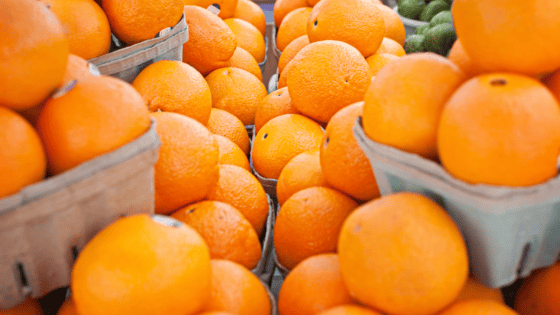50+ Fruits That Start With M – With Descriptions
This list of fruits all start with the letter M.
The ‘M’ collection of fruits is particularly mesmerizing, with a medley of flavors, textures, and aromas. With many different variations of more well-known fruits.
From the well-loved mango to the mystique of the mangosteen, each fruit in this category holds a story waiting to be tasted and told.
Let’s unfold these tales, one fruit at a time:
List of Fruits That Start With M
Macadamia (Macadamia integrifolia): Native to Australia, these are often recognized for their rich, buttery nuts but the tree also bears fruit.
Mabolo (Diospyros blancoi): Known as velvet apple, it’s a furry fruit with sweet, fragrant flesh inside.
Mace: A spice derived from the outer layer of the nutmeg fruit.
Machete (Selenicereus grandiflorus): This cactus fruit has a delicate taste, similar to melons.
Madelon (Melicoccus bijugatus): A tropical fruit similar to lychee in texture but unique in taste.
Madrono (Rheedia madruno): Native to Central America, it has sweet, creamy flesh.
Maesopsis fruit: Native to Africa, it has a berry-like consistency.
Magellan Barberry (Berberis microphylla): Produces small, dark berries often used in jams.
Magellan Raspberry (Rubus magellanicus): A type of raspberry found primarily in South America.
Maidenhair Tree (Ginkgo biloba): While the ginkgo nut is the more consumed part, the fruit has a distinct smell and is less popular.
Mamey Apple (Mammea americana): Native to the West Indies, its flesh is sweet and fragrant.
Mamey Sapote (Pouteria sapota): A large, brown fruit with a sweet, creamy interior reminiscent of sweet potato and pumpkin.
Mamoncillo (Melicoccus bijugatus): Also known as Spanish lime, these small fruits are a mix of sweet and sour.
Mango (Mangifera indica): Widely loved, this tropical fruit is sweet, juicy, and comes in various varieties worldwide.
Mangosteen (Garcinia mangostana): Known as the “queen of fruits”, it has a thick purple rind and juicy white segments inside.
Manila Tamarind (Pithecellobium dulce): It’s sweet and sour, often consumed in Mexico and Southeast Asia.
Manny Berry: A juicy berry with a sweet flavor.
Manuka (Leptospermum scoparium): Native to New Zealand, its berries are edible.
Maprang (Bouea macrophylla): Native to Southeast Asia, it tastes like a mix of mango and apricot.
Marang (Artocarpus odoratissimus): A relative of jackfruit and breadfruit, it has a strong aroma and sweet taste.
Marula (Sclerocarya birrea): Native to Africa, it’s known for its alcoholic drink, Amarula.
Marumi Kumquat: A small, round citrus fruit that’s sweet on the outside and sour inside.
Marula (Sclerocarya birrea): African fruit often used to make the famous Marula liquor due to its fermenting properties.
Mayapple (Podophyllum peltatum): North American plant bearing edible fruit but must be eaten ripe and in moderation.
Mayhaw (Crataegus aestivalis): A type of hawthorn, producing red, jelly-like fruits.
Maypop (Passiflora incarnata): Also known as purple passionflower, it produces a sweet fruit.
Medlar (Mespilus germanica): It’s consumed when it has turned almost mushy and has a unique, acquired taste.
Melon Pear (Solanum muricatum): A fruit that looks like a melon but tastes more like a pear.
Melon (Cucumis melo): A broad category including cantaloupes, honeydews, and more. They are typically sweet and juicy.
Mexican Apple (Casimiroa edulis): Also known as white sapote, it’s creamy and sweet.
Midgen Berry (Austromyrtus dulcis): Small Australian berries with a mild, sweet taste.
Midyim (Austromyrtus dulcis): An Australian berry with a sweet and tangy flavor.
Miracle Fruit (Synsepalum dulcificum): Alters taste buds temporarily, making sour foods taste sweet.
Mirabelle Plum: Small, yellow plums with a sweet and tangy taste.
Mocambo (Theobroma bicolor): A relative of cacao, it has large seeds and a sweet-tart pulp.
Monstera Deliciosa: Tropical fruit that tastes like a blend of banana and pineapple.
Morus (Morus spp.): Commonly known as mulberries, they come in various colors and are sweet and juicy.
Morus Nigra: Known as black mulberry, these are particularly sweet and rich.
Mountain Apple (Syzygium malaccense): Not to be confused with a traditional apple, this fruit has a watermelon-like texture and a mild taste.
Mountain Papaya (Vasconcellea pubescens): Different from traditional papayas, they have a milder taste.
Mountain Soursop (Annona montana): This fruit is related to the soursop but grows at higher altitudes. It’s less sweet than its tropical counterpart but still offers a unique, tangy flavor.
Mulberry (Morus): These come in several varieties – red, black, and white. They are sweet, slightly tart fruits reminiscent of raspberries and blackberries.
Mundu (Garcinia dulcis): Found in Southeast Asia, it has a sour-sweet taste, similar to mangosteen.
Muntingia (Muntingia calabura): Also known as the Jamaican cherry or calabura, this tiny red fruit has a sweet taste and texture that’s somewhat reminiscent of cotton candy.
Murici (Byrsonima crassifolia): Native to the Amazon rainforest, these small yellow fruits are sweet with a hint of creaminess, often used in ice creams and sweets.
Muscadine Grape (Vitis rotundifolia): Native to the southeastern US, they are thicker-skinned than regular grapes and have a unique, sweet taste.
Muskmelon (Cucumis melo): Part of the melon family, known for its sweet and fragrant flesh. Varieties like cantaloupe and honeydew are popular examples.
Myrobalan Plum (Prunus cerasifera): Often used in traditional medicine, this plum has both a sweet and tart flavor.
Myrtle Berry (Myrtus): Native to the Mediterranean, these berries are small and aromatic, often used to make liqueurs.
Myrtus Fruit: A relative of the myrtle berry, it’s a small berry with a sweet, aromatic flavor.
Mysore Raspberry (Rubus niveus): Originating in India, this raspberry variety is deep purple to black and offers a tart-sweet taste.
For more lists of fruits, check out:
- Fruits That Start With A
- Fruits That Start With B
- Fruits That Start With C
- Fruits That Start With D
- Fruits That Start With E
- Fruits That Start With F
- Fruits That Start With G
- Fruits That Start With H
- Fruits That Start With I
- Fruits That Start With J
- Fruits That Start With K
- Fruits That Start With L
- Fruits That Start With M
- Fruits That Start With N
- Fruits That Start With O
- Fruits That Start With P
- Fruits That Start With Q
- Fruits That Start With R
- Fruits That Start With S
- Fruits That Start With T
- Fruits That Start With U
- Fruits That Start With V
- Fruits That Start With W
- Fruits That Start With X
- Fruits That Start With Y
- Fruits That Start With Z





